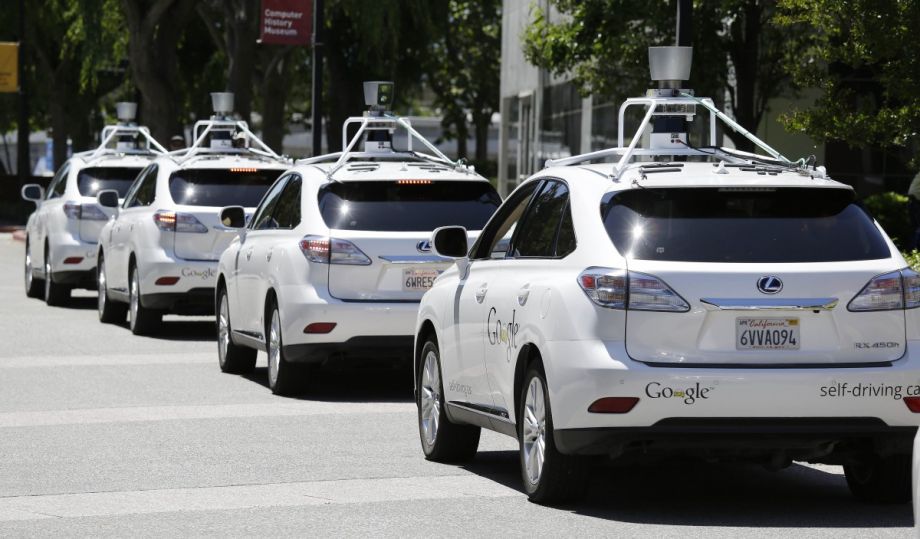Tech giants Google, Apple and Intel are in a race with automakers like BMW and Tesla to perfect an autonomous driver system that’s reliable and replicable within the next few years. Yet as the world watches on with visions of a Jetsons-like future and city policymakers consider regulations, people who drive for a living in U.S. cities are trying to figure out what it all means for them.
Technical advances have always come with negative impacts like job losses for some, but driving careers in particular are worth watching because they’re economic multipliers at the city level. Ninety-three percent of the 4.1 million employed drivers in the U.S. don’t have bachelor’s degrees, yet drivers on the whole average a poverty rate that’s lower than workers who aren’t in the driving field, at 7.32 percent compared to 8.08 percent. And while nearly two-thirds of drivers identify as white, D.C.-based think tank Center for Global Policy Solutions reports that minorities in driving careers have a “premium” in this field, meaning they’re getting paid better than what they’d likely get paid in other non-driving careers without a college degree, according to U.S. Census data.
That’s something that Jose Garcia, a construction waste driver in New York City, can attest to. In 2016 he made $90,000 working 10 months out of the year. The 32-year-old dropped out of high school and picked up a career in driving because it was something he grew up around. His oldest cousin, driving now for nearly two decades, delivers heating oil to houses. His grandfather used to deliver boilers to sites throughout New York.
He says he’s not too concerned about autonomous vehicles disrupting his paycheck anytime soon because his job requires a lot of on-the-ball thinking. He recently had to operate a crane to unload a construction dumpster off the back of his truck and settle it between two parked cars.
“The city changes by the second. The construction sites can change within a minute,” he says. In New York, there are “too many cars, too many people — it’s a different world. It’s not like where they’re trying [autonomous cars] out.”
Ryan Janota, a 32-year-old freight driver in Aurora, Illinois, isn’t as confident. He works for XPO Logistics. That company’s CEO, Bradley Jacobs, told a trucking publication in February of this year that he was ready to embrace the autonomous future, adding that “computers don’t drive while drunk” and “they don’t suffer from sleep apnea and fall asleep at the wheel.”
“We deliver everything to everyone,” says Janota. “From the tables at home to the clothes they wear on their backs, it all comes from a semi. If one company’s going to [go driverless], then it progresses and every company’s going to do it.”
“That’s a lot of jobs,” he adds. A McKinsey report from 2013 says long-haul trucking companies stand to save $100 billion to $500 billion by the year 2025 simply by cutting out truck driver wages. Janota makes about $60,000 a year, without a college degree, and spends a couple grand each month to pay for rent and support his wife and 3-year-old son.
In the Center for Global Policy Solutions report, called “Stick Shift: Autonomous Vehicles, Driving Jobs, and the Future of Work,” researchers were able to identify which states will probably face the greatest economic impact thanks to driverless vehicles in the short term, based on the number of people employed in driving careers as a fraction of total employment. Those include Mississippi, Wyoming, West Virginia, Idaho and North Dakota. (In another take on U.S. Census data, NPR found that in 2014 there were 29 states where “truck driver” was the state’s most common job.)
Maya Rockeymoore, a lead researcher on the report and director of the Center for Global Policy Solutions, says she’s also worried about what a sudden influx of unemployed drivers would do at the municipal level.
“What this could mean for those areas where there’s disproportionate impact, is that we see more unemployment, and people scrambling to get jobs but when they do get jobs they’re earning less,” she says. “That means human need will increase, and the burden will fall on public programs in cities to meet that need.”
It’s worth remembering that autonomous vehicle technology is gaining momentum in the first place because it’s predicted to provide a better, more cost-efficient form of road transportation. The National League of Cities estimates that, when they hit the consumer market, AVs will save us anywhere from $3,000 to $5,000 a year, thanks to smarter safety measures and less time wasted at the wheel.
But cities that find themselves caught off guard by the speed of the technology may lose some consumer power from drivers like Garcia before they start seeing economic gains.
“If I didn’t have this, I don’t know what I’d be able to do,” he says. “I have no education. The only thing I got is my [commercial driver’s license], and my family depends on it.”

Johnny Magdaleno is a journalist, writer and photographer. His writing and photographs have been published by The Guardian, Al Jazeera, NPR, Newsweek, VICE News, the Huffington Post, the Christian Science Monitor and others. He was the 2016-2017 equitable cities fellow at Next City.
















